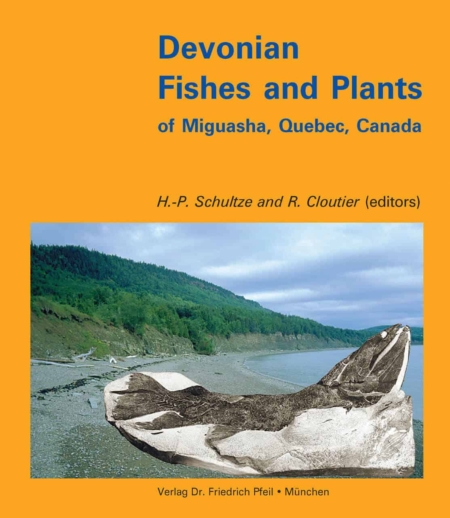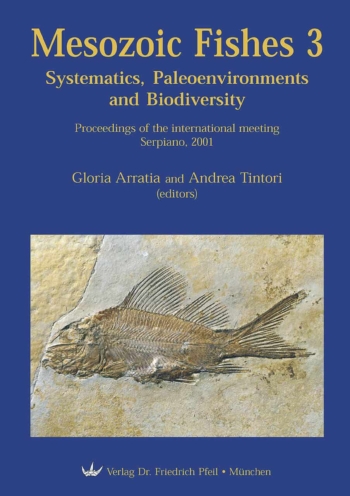Exceptional state of preservation, abundance and evolutionary significance of the fossils make Miguasha a world-class locality. Among the fossil fishes found in Miguasha, Eusthenopteron became the keystone for our understanding of one of the most important steps in vertebrate evolution, the conquest of land. E. Jarvik, Stockholm, made Eusthenopteron the best studied fossil fish to such details as the course of nerves and blood vessels. Also found at Miguasha is Elpistostege, which is even closer to tetrapods than Eusthenopteron.
The book provides a complete coverage of the Escuminac fossils and their paleoenvironment. A historian, a sedimentologist, a geochemist, a palynologist, paleobotanists, and paleozoologists from five countries contributed to reviving this 365 million years old ecosystem. Every species of plants, invertebrates, and fishes of the Escuminac Formation are described, abundantly illustrated, and placed in the tree of life.
Miguasha is a time-capsule that significantly enhances our understanding of the Late Devonian as a step in our own evolution.
Since December 1999, Miguasha Park was inscribed on the UNESCO World Heritage List. In its representation of vertebrate life, Miguasha is the most outstanding fossil site in the world for illustrating the Devonian as the “Age of Fishes”. The area is of paramount importance in having the greatest number and best preserved fossil specimens found anywhere in the world of the lobe-finned fishes that gave rise to the first four-legged, air-breathing terrestrial vertebrates – the tetrapodes.
In North America, the book is sold directly at Miguasha Park and for further information, you may contact parc.miguasha@sepaq.com or arsenault.marius@sepaq.com.






Reviews
There are no reviews yet.